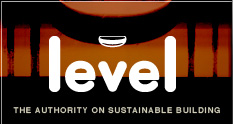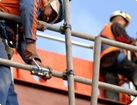Health and Safety
Taking care with materials, equipment and work procedures and dealing with hazards.
Scaffolds
Scaffolding is often a practical option for working at a height as it provides a permanent (for the duration of the project), secure and stable working surface. The most commonly used scaffolding systems are free-standing or suspended.
Free-standing scaffolds
Free-standing scaffolds must:
- be erected level and plumb
- be on solid footings or supports
- be braced
- be tied to the structure if possible
- have guardrails and toe boards
- have the planks or decks secured to the scaffold structure.
Suspended scaffolds
Suspended scaffolds must:
- be securely supported and anchored
- be easily accessible 600 mm above or below the working level
- have guardrails to prevent a fall
- be able to carry the required loads.
Workers on suspended scaffolding must wear a safety harness that is secured to a fixed support or preferably an independent lifeline.
Notification and supervision
All suspended scaffolds and all free-standing scaffolds where a person or object could fall more than 5 metres should be erected, altered and dismantled by (or directly supervised by) someone with a Certificate of Competency for this. The erection must be notified to WorkSafe. You can find a notification form on the WorkSafe site here.
Productivity gains
BRANZ commissioned NZIER to assess the benefits and costs of using scaffolding on single-storey new build houses. The research found that the cost of scaffolding is partially offset by productivity benefits.
Updated: 03 February 2020


